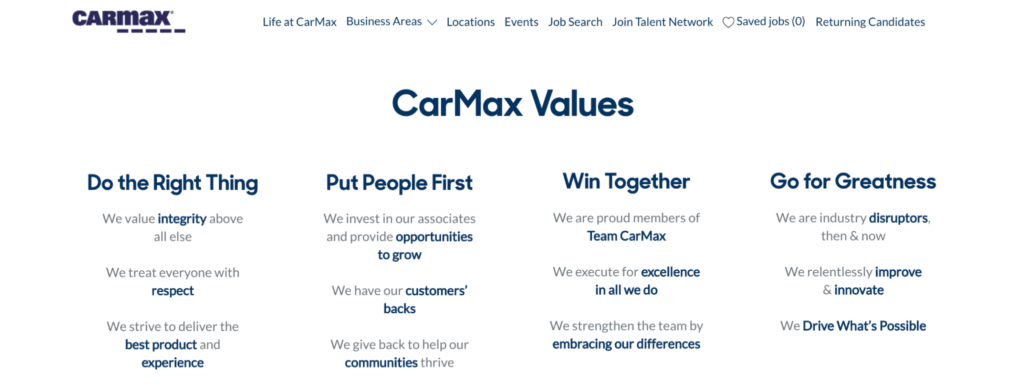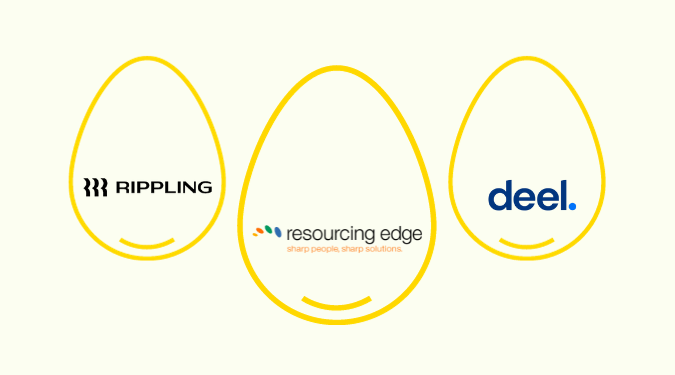Disclosure: This content is reader-supported, which means if you click on some of our links that we may earn a commission.
Hiring top-performing employees is only half the battle—the other half is knowing how to retain them long term.
Many companies struggle with reducing employee turnover. They cannot pinpoint reasons that lead to employee departure, making it harder for them to reverse the turnover tide favorably.
As always, Crazy Egg has got your back.
Today, we’ll discuss employee retention, along with a list of carefully curated tips and strategies to help you improve retention and keep your workplace thriving.
Ready?
Why Employee Retention Is So Important
Have you ever walked into a workplace that has more empty chairs than employees? Even imagining it feels depressing. Or one where half the workforce has been there for less than six months?
This signals an employee retention problem within the company, which can hinder its overall growth and progress.
Employee retention indicates an organization’s ability to keep its employees from leaving. You have to repeatedly invest in your employee experience to keep talent content and engaged, keeping employee turnover in check.
Put simply, the higher your employee retention rate, the lower your employee turnover rate.
But why is employee retention so crucial for an organization’s success? Here are five main reasons why:
1. To Ensure Consistency
You cannot have a thriving company culture if your work environment is practically a revolving door with employees coming and going every other week.
Your business will lack momentum. Managers will be forced to spend significant time training new employees instead of focusing on larger goals. Employees won’t give their best.
On the other hand, the longer your employees stay at the job, the more experienced and skilled they get. This will eventually translate to greater ROI as quality employees mean quality work, which means happier clients.
2. To Create a Healthy Corporate Culture
Experts have found that great coworkers are the number one thing people like about their job.
This also means your company culture will take a serious hit if your employees cannot develop strong bonds with other team members. But how is one supposed to establish camaraderie when your coworkers keep quitting?
We aren’t saying losing employees to other opportunities from time to time is always bad. It’s totally okay–and expected! The problem arises when this becomes the rule rather than the exception.
Employee retention encourages camaraderie among co-workers. The more the camaraderie, the quicker your employees will help each other out and extend necessary support.
In short, employees like to work at places where they like and enjoy their colleagues and have a comfortable work environment.
3. To Improve Employee Morale
Seeing your work friends and peers leave over and over creates a poor work environment. It’s why low employee retention impacts your workforce’s overall morale negatively.
However, if you prioritize employee retention and build a team of dedicated and confident employees, you’ll find your workforce:
- Becoming more comfortable and less stressed
- Having a stronger sense of belonging and community
- Developing better coworkers relationships
- Contributing more to company culture and facilitating business growth
- Enjoying long-term success and working hard
Plus, when an employee feels valued, they are less likely to look for other job opportunities.
4. To Reduce Acquisition and Training Time
Anyone in the human resources department knows that high turnover eats time and kills productivity.
The whole hiring process can be very tedious: Find new candidates who are qualified and reliable. Set up multiple interviews. Offers and negotiations. Spend another few days onboarding the employees. Wait another two weeks before they can start. Then spend days or weeks training new employees.
Too. Much. Work.
Contrarily, if you focus on retaining employees, you can cut down on time spent on the above tasks and instead focus your energy on something else—more productive tasks that aid your business’s growth.
Employee retention can also help you acquire new employees.
You see, retention boosts morale, which makes your employees happy and satisfied. And when your employees are happy, they turn into an effective in-house referral tool that can bring you a steady stream of quality candidates.
It’s a win-win situation for you.
5. To Save Money
Turnover can also be quite expensive.
You may already know how quickly the hours can rack up when hiring and training employees, especially when the position goes unfilled for a long time. Moreover, when employees constantly move in and out of your company, it ends up increasing costs associated with:
- Severance or other exit packages
- Recruitment and talent acquisition
- Hours spent on interviews, onboarding, and training
- Lost productivity
- Frequent errors
- Downgraded customer service
Here’s a shocker for you: Depending on the role you’re replacing, turnover costs for a low-paying job cost about 16% of the employee’s annual salary, which jumps to 20% and over 213% for mid-range and high-level positions, respectively.
We don’t need to emphasize how catastrophic it can be for your business when you end up paying this cost time and time again. Luckily, employee retention strategies can help reduce these expenses drastically.
Employee Retention Case Study: CarMax

You don’t have to take our word on the wonders of employer retention—just take a look at CarMax.
Remember the horrible 2008 recession that caused a global financial meltdown? Many companies were cutting employee benefits, perks, and recognition programs—some were even forced to lay off employees without notice.
But not CarMax.
Instead of following suit, CarMax’s president and CEO, Tom Folliard, invested even more in employee programs. The company increased its employee training and development programs, helping existing employees get raises and promotions.
They also asked the employees for their own ideas on improving the customer experience—ideas CarMax rewarded with robust employee recognition programs.
Adopting this employee-centric strategy struck gold. Currently, CarMax sales are up 116% in eight years.
Choosing your human resources over money pays off in the long run.
Quick Tips to Improve Employee Retention Today
Read on as we list some of the best tips to keep your retention rates up.
Start With New Hires
About 20% of new hires leave within the first 45 days of employment.
They are either not a good fit with the company culture, or the role didn’t live up to their expectations. Either way, this doesn’t paint a good picture of your company.
Other times, you may decide to fire a new hire because they weren’t a good fit. This isn’t good for your hiring budget, considering how expensive hiring is.
Precisely why you need to hire the right people from the start.
You can use human resource software like BambooHR or Zenefits that provides excellent solutions to help you effectively recruit and onboard employees. These tools can also help you identify skill gaps in your organization and predict future business requirements.

You should also be completely transparent and honest about what the position entails. After all, interviews are a two-way process—you interview the candidate, the candidate interviews you. Be upfront about the realities of the job and the company culture.
Offer Competitive Compensation
Employees prefer higher-paying employers.
If your pay rates don’t match your competitors, you’ll have a hard time attracting quality employee talent and retaining your current employees.
Find out what your competitors pay for similar positions. You can build a league table listing what similar companies pay for what positions and where you rank. Sites like Glassdoor can be an excellent starting point to find this data.
You don’t have to offer the highest salary out there, but it shouldn’t be too low, either. If you can’t spare that kind of money right away, try to think of other ways to encourage your staff to stay put–such as more benefits or perks.
Offer Competitive Benefits & Perks
No, we don’t mean fancy five-course lunches, unlimited holidays, or monthly raises.
Contrary to popular belief, you can offer an employee benefits package tailored to your business size, budget, and business objectives. The key is to prioritize benefits that will make a tangible difference in your employees’ lives. You can always add the fancy stuff later when you have money to spare.
Here’s a list of benefits or perks you can consider offering:
- Flexible Working Hours: Offering flexible working hours for non-client-facing roles is a substantial perk employees will appreciate. Most employees prefer flexible hours as it lets them manage their childcare commitments and have a more flexible schedule.
- Work-From-Home Opportunities: This low-cost perk goes very far with new and existing employees. Like having flexible work hours, being able to work remotely lets your employees have a better work-life balance and better mental health without negatively affecting productivity. It also saves on commute costs and time.
- Childcare Vouchers: Childcare is expensive. Your employees with families will stick with your company for longer if you offer childcare vouchers to help them with the cost.
- Lunch Program: Lunch hours typically involve buying, prepping, or eating food. Yep, boring. But when you offer a tasty and healthy in-house lunch solution, your employees will get to enjoy delicious food to recharge their energy levels, as well as communicate with other co-workers, creating a healthy work atmosphere.
- Health Coverage: In the US, offering healthcare benefits is a must. But if you live elsewhere, having some form of healthcare can be very effective in retaining employees.
Long-Term Strategies for Effective Employee Retention
Sometimes even generous compensation cannot persuade employees to stay.
You should focus on creating a positive work environment where everyone feels appreciated and motivated. Keeping this in mind, let’s take a look at some long-term strategies to improve employee retention.
Fine-Tune Your Internal Communication
Effective internal communication that gives employees easy access to the right information and resources can be a real game-changer.
Employees spend approximately 2.5 hours a day looking for information to complete daily tasks. For more context, this is more than an entire week lost each month.
Naturally, when information doesn’t flow easily, employee frustration rises.
The first step to streamline communication is getting the right technology to manage content across your organization. Internal communication technology, along with other tools, is great for eliminating bottlenecks and simplifying communication.
Remember, internal communication should be a two-way dialogue: encourage your employees to give feedback and actively contribute any ideas they may have to improve your internal communication strategy.
Invest in Employee Recognition
While annual performance reviews may be dying out in some sectors, recognizing employee accomplishments is still crucial.
Employee recognition should be an ongoing effort on your part, where you make your employees feel appreciated and valued. A study conducted by Gallup found that employees are twice as likely to quit their jobs within the next year if they feel overlooked by their employers.
Plus, investing in employee recognition can reduce employee turnover, boost productivity, and create loyal and trusting relationships between you and your employees.
However, saying a generic “well done” doesn’t work anymore.
You have to elaborate. Give your employees specific examples of what they did well and how it helped your business. You can also send out emails to let others know about an employee’s accomplishment.
Both tactics can reinforce the actions that led to a good outcome, creating performance standards for other workers.
Build a Positive and Thriving Company Culture
You probably already expected this.
Your company culture represents your core values and how they reflect on your work environment. Ultimately, this affects how your employees feel about your brand.
A good workplace goes beyond how comfortable the furniture is, how spacious the cubicle is, or how well the office is decorated. It’s your people and how they operate that matter most.
The Workplace Bullying Institute found that a staggering 60.3 million Americans have been bullied at work. What makes matters worse is that only 29% of them received an adequate response from their employer.
Needless to say, this isn’t healthy. You need to create a safe workplace with zero tolerance for any kind of office bullying, harassment, or misbehavior.
Create a company culture that’s inspirational and helps enhance creativity, employee wellness, and professional development. The idea here is to make sure every employee is and feels safe at work.
Have your management set the tone for the workplace—one that fosters transparency, respect, and communication between employees. Try to create a positive culture where everyone focuses on themselves, accepts honest feedback, and avoids negative behavior.
Next Steps
Managing employees is an ongoing process. While you focus on retaining them and helping them thrive, make sure you’re also getting results in the form of more sales and higher revenue.
As a business owner, you’ll find yourself juggling employees and customers. To help you strike the right balance, check out these other Crazy Egg guides:














